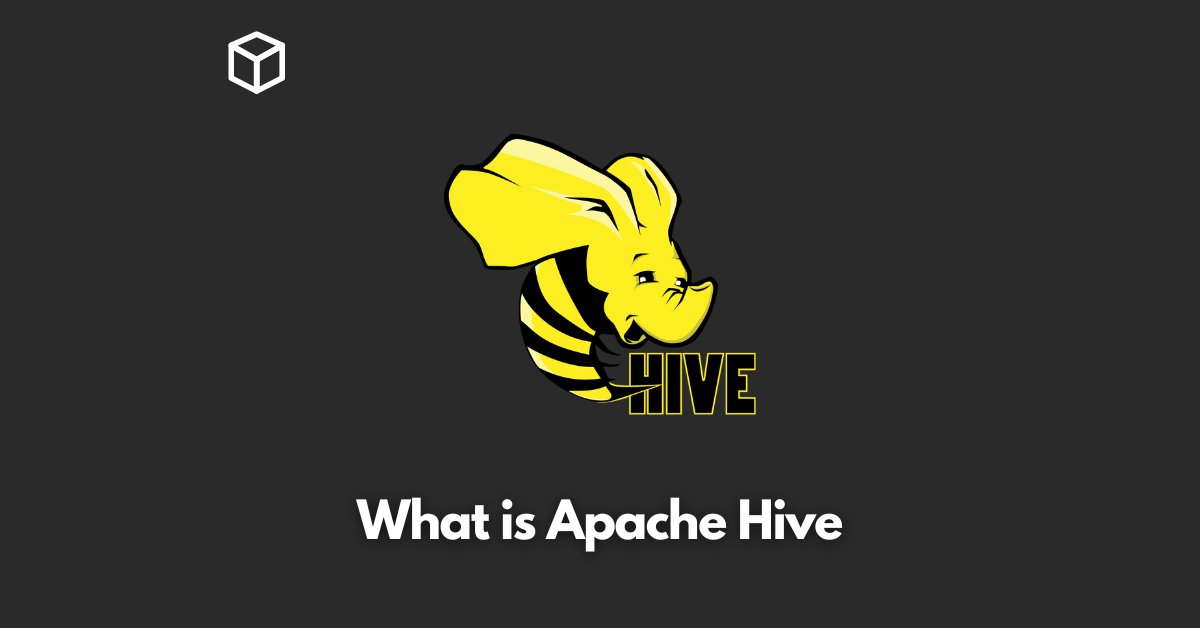Apache Hive is a data warehousing and SQL-like query language tool for big data that runs on top of Hadoop’s Distributed File System (HDFS).
It allows users to perform SQL-like queries on large datasets stored in HDFS, making it a great tool for data analysis and business intelligence.
Hive is similar to other big data technologies like Hadoop and Pig, but it focuses on providing a more user-friendly interface for querying and managing data.
Hive Architecture
Hive’s architecture includes the Hive Metastore, HiveServer2, and HiveQL.
The Hive Metastore is a relational database that stores metadata about the data stored in HDFS, such as the location of the data and its schema.
HiveServer2 is a service that allows multiple users to connect to the Hive Metastore and query the data using HiveQL.
HiveQL is a SQL-like query language that is used to query the data stored in HDFS.
It is similar to SQL but has some differences, such as support for map-reduce operations.
Hive works with Hadoop’s HDFS by reading data from HDFS and storing the results of HiveQL queries back to HDFS.
It utilizes the power of Hadoop’s distributed computing to perform the query and analysis on large datasets, making it a great tool for big data processing.
HiveQL
HiveQL is a SQL-like query language that is used to query the data stored in HDFS.
It is similar to SQL but has some differences, such as support for map-reduce operations.
HiveQL allows you to perform operations like SELECT, FROM, WHERE, JOIN, GROUP BY, and more. It also supports advanced features like subqueries, window functions, and lateral views.
HiveQL is similar to other query languages used in big data, such as Pig Latin and Impala SQL. However, HiveQL is more similar to SQL and easier for SQL users to learn.
Here are some examples of HiveQL queries and their results:
- SELECT COUNT(*) FROM table_name; //Will return the number of rows in the table
- SELECT column_name FROM table_name WHERE column_name = ‘value’; //Will return all rows where the specified column equals the specified value
- SELECT column_name, SUM(column_name) FROM table_name GROUP BY column_name; //Will return the sum of the values of the specified column grouped by column_name.
Data Management in Hive
Hive’s data model is based on tables and partitions. Tables are the basic unit of storage in Hive, and they can be thought of as equivalent to a table in a relational database.
Partitions are a way to divide a table into smaller, more manageable pieces.
By partitioning a table, you can improve query performance by only scanning the partitions that are relevant to a query.
Hive supports various data types, including primitive data types like INT, BIGINT, FLOAT, and BOOLEAN, as well as complex data types like ARRAY, MAP, and STRUCT.
Hive also supports external tables, which allow data stored in other systems to be queried using HiveQL.
Hive has several built-in functions for data processing and analysis, such as aggregate functions, mathematical functions, and string functions.
Users can also create their own functions, called User-Defined Functions (UDFs), to extend Hive’s functionality.
Hive UDFs and UDAFs
Hive User-Defined Functions (UDFs) allow users to create their own functions to extend Hive’s functionality.
UDFs can be used to perform custom operations on data that are not provided by Hive’s built-in functions.
They can be written in programming languages like Java and Python and are used in HiveQL queries just like built-in functions.
Hive also supports User-Defined Aggregate Functions (UDAFs), which are similar to UDFs but are used to perform aggregate operations on a set of input values, such as calculating the average or sum.
UDAFs can be used in HiveQL queries with the GROUP BY clause to perform aggregate operations on groups of data.
Using UDFs and UDAFs in HiveQL can help to simplify and optimize queries, and provide more customized data processing.
Hive Performance
Hive’s performance is affected by several factors, such as the amount of data being processed, the complexity of the query, and the configuration of the system.
One way to improve Hive’s performance is by partitioning and bucketing the data.
Partitioning the data can improve query performance by only scanning the partitions that are relevant to a query.
Bucketing the data can improve performance by allowing Hive to more efficiently organize the data for querying.
Hive’s performance can also be compared to other big data technologies like Impala and Spark SQL.
While each technology has its own strengths and weaknesses, Hive’s SQL-like query language and integration with the Hadoop ecosystem make it a popular choice for data warehousing and analysis tasks.
Hive and the Future of Big Data
Hive has seen several recent developments, such as the introduction of the LLAP (Live Long and Process) feature, which improves Hive’s performance by allowing queries to be executed in-memory.
Hive also now has support for the ORC file format, which is optimized for data warehousing and provides better performance than the previous RCFile format.
Hive fits into the broader big data ecosystem as a powerful tool for data warehousing and analysis.
As big data continues to grow in importance, Hive’s role in the ecosystem is likely to become even more vital.
Conclusion
In this blog post, we have discussed the basics of Apache Hive, a data warehousing and SQL-like query language tool for big data.
We have covered Hive’s architecture, query language, data management, and performance characteristics.
We also discussed the future of Hive and its role in the broader big data ecosystem.
If you’re interested in learning more about Hive, we encourage you to try it out and explore its capabilities.
With its SQL-like query language and powerful data processing capabilities, Hive is a valuable tool for anyone working with big data.




